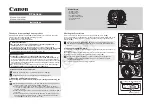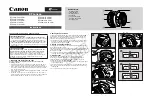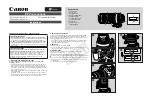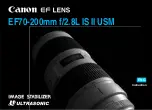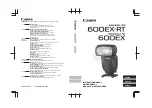
6
Installation Instructions
PEAK WHITE INVERSION ON/OFF
Peak white inversion is used to eliminate the effect of point sources of light, for example car
headlamps. These point sources of light are typically much brighter than the rest of the scene
and although relatively small in terms of area, they can dramatically affect the cameras exposure
system and the lens iris. For example, car headlamps will cause the lens iris to close or the
cameras exposure time to be decreased. The rest of the scene will then become much darker
and thus it could prove impossible to read the vehicle licence plate.
Peak white inversion renders the highlights in such a scene above a specified brightness
threshold as black. This is performed before the signal is passed to the cameras electronic iris
control, AGC control or the lens iris. Therefore point sources of light are effectively ignored and
the exposure and applied gain is correct for the rest of the scene. The inverted areas of the
scene are shown by the monitor as black. See also
Peak White Inversion Adjustment
Potentiometer.
When using peak white inversion, the AV-PK potentiometer (either on the camera for a DC lens,
or the lens itself for a video drive type lens), must be set to peak
BACKLIGHT COMPENSATION
The backlight compensation feature can be used to eliminate the effect of an area of strong
background lighting in a scene. If a strong background light such as a window exists in a
scene, the camera will try to compensate for it by reducing the overall exposure. This would
mean that the areas surrounding the window would become too dark.
By using the backlight compensation feature, it is possible to select areas of the scene which
may be used to control the exposure. The BLC feature is used in conjunction with the BLC
Window Selection switches (B, C and D, figure 1). These switches select one of eight predefined
BLC windows which the camera uses to calculate its exposure. The shaded area on the
diagram represents the area used within the scene for exposure control. Any part of the scene
outside of the shaded area is ignored. Default setting is Window 1.
The BLC feature is turned
on
or
off
using switch K figure 1. Default setting is
off
. BLC will only
function with a manual iris lens when the Electronic Iris feature is switched
on
. For direct drive
and video drive lenses, BLC will still function even though the Electronic Iris feature is switched
off.
Window 1
Window 2
Window 3
Window 4
C D
B
C D
B
C D
B
C D
B
C D
Window 6
Window 7
Window 8
B
C D
B
C D
B
Window 5
C D
B

















